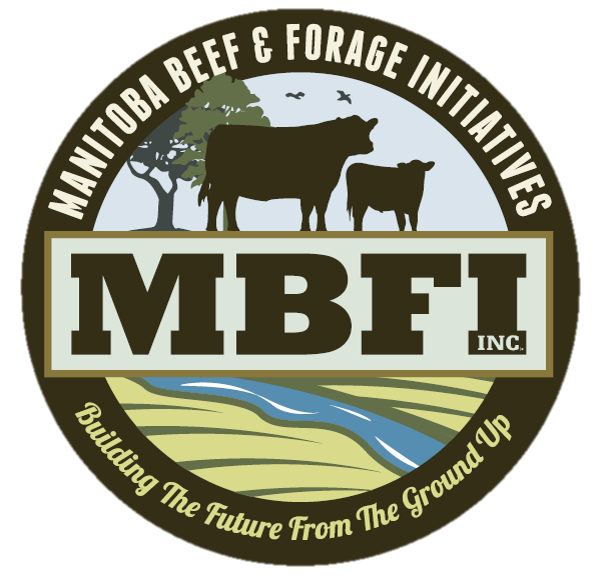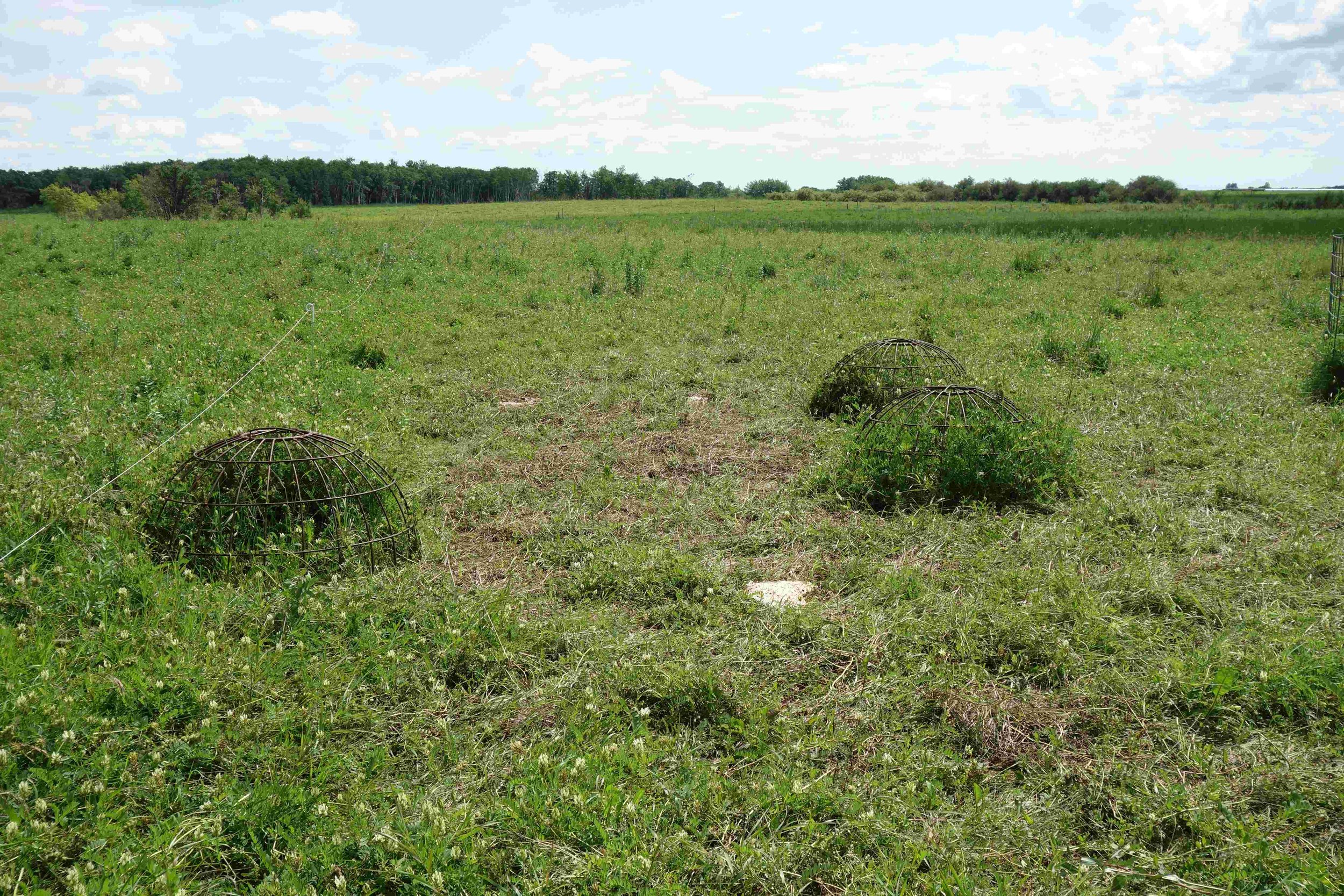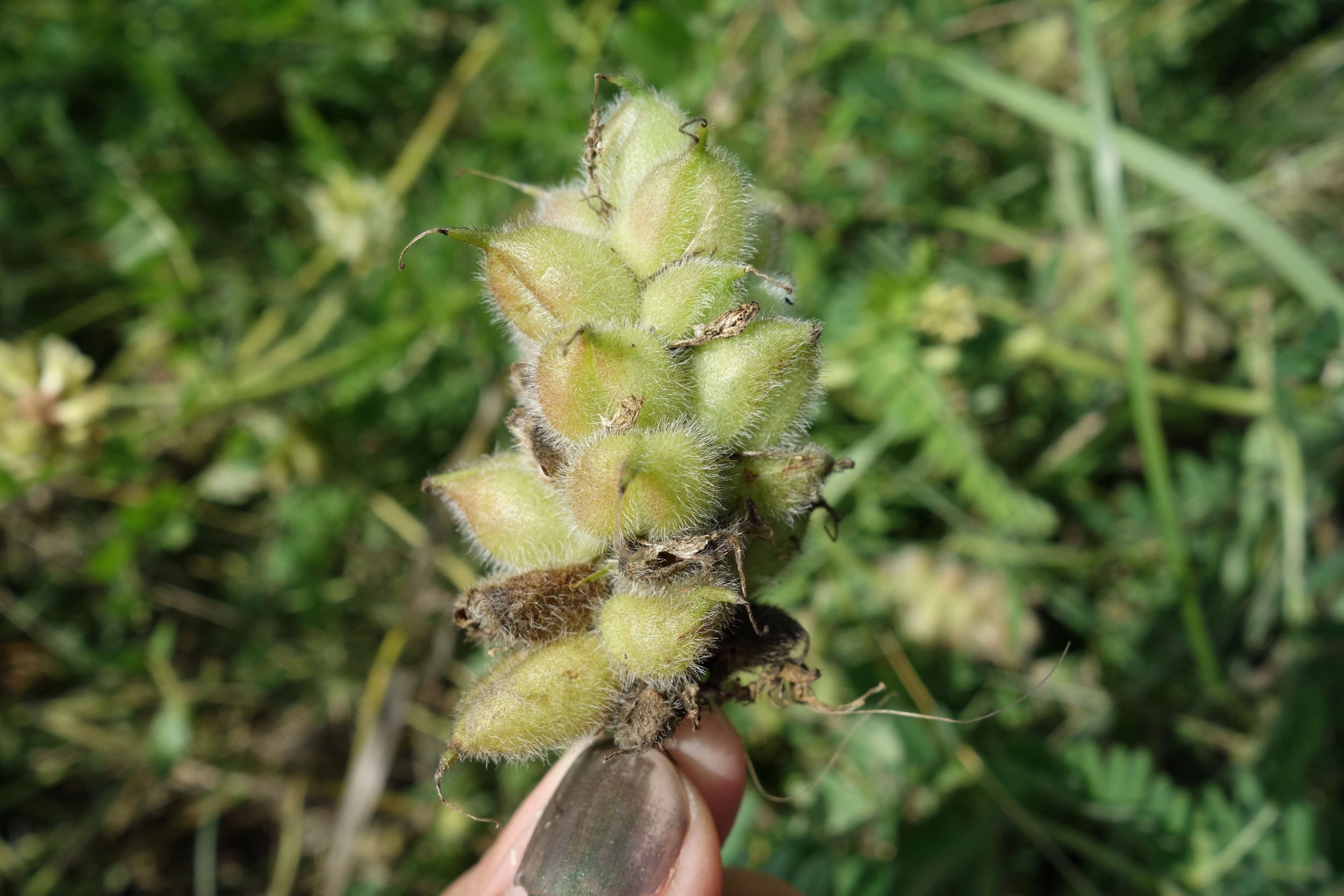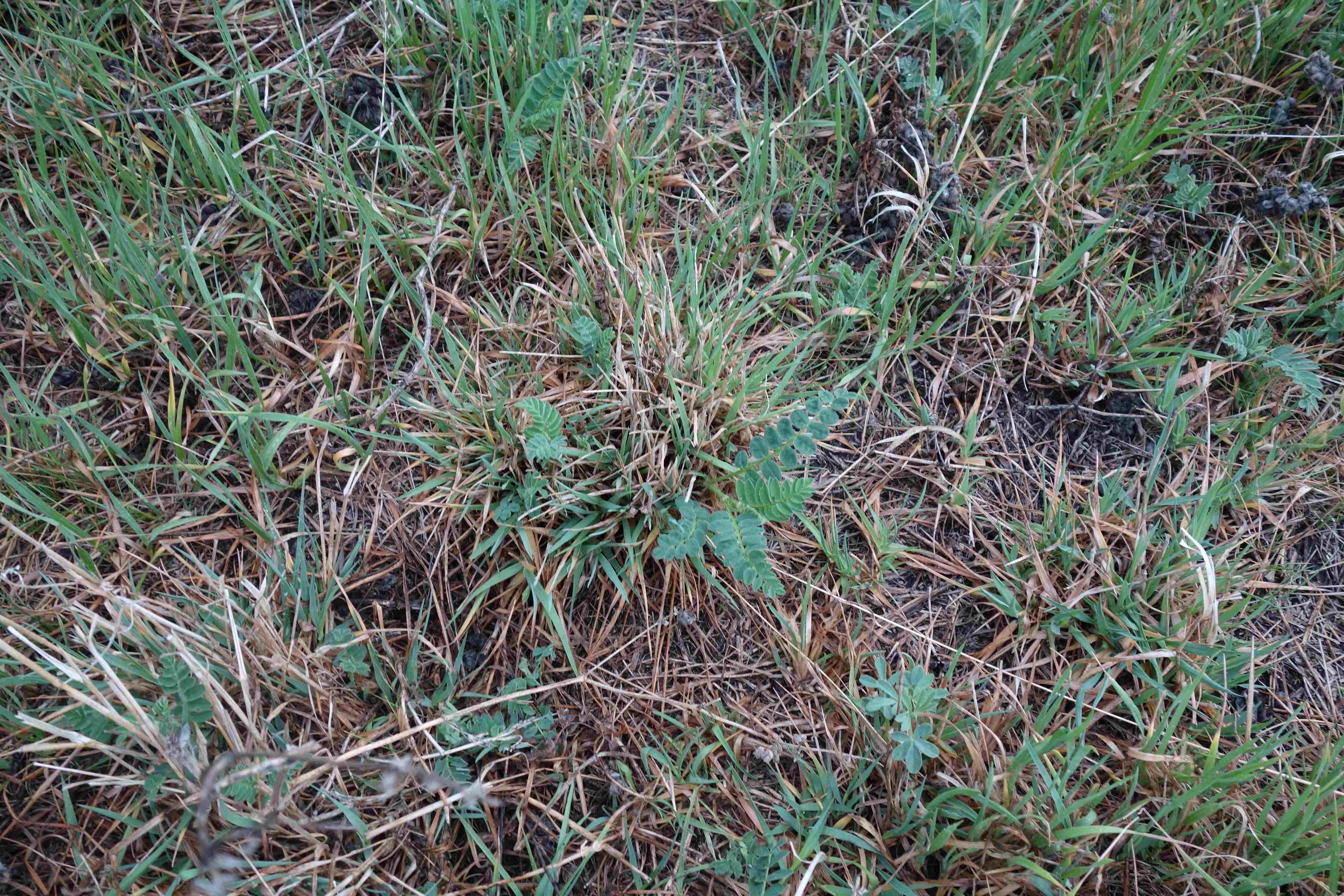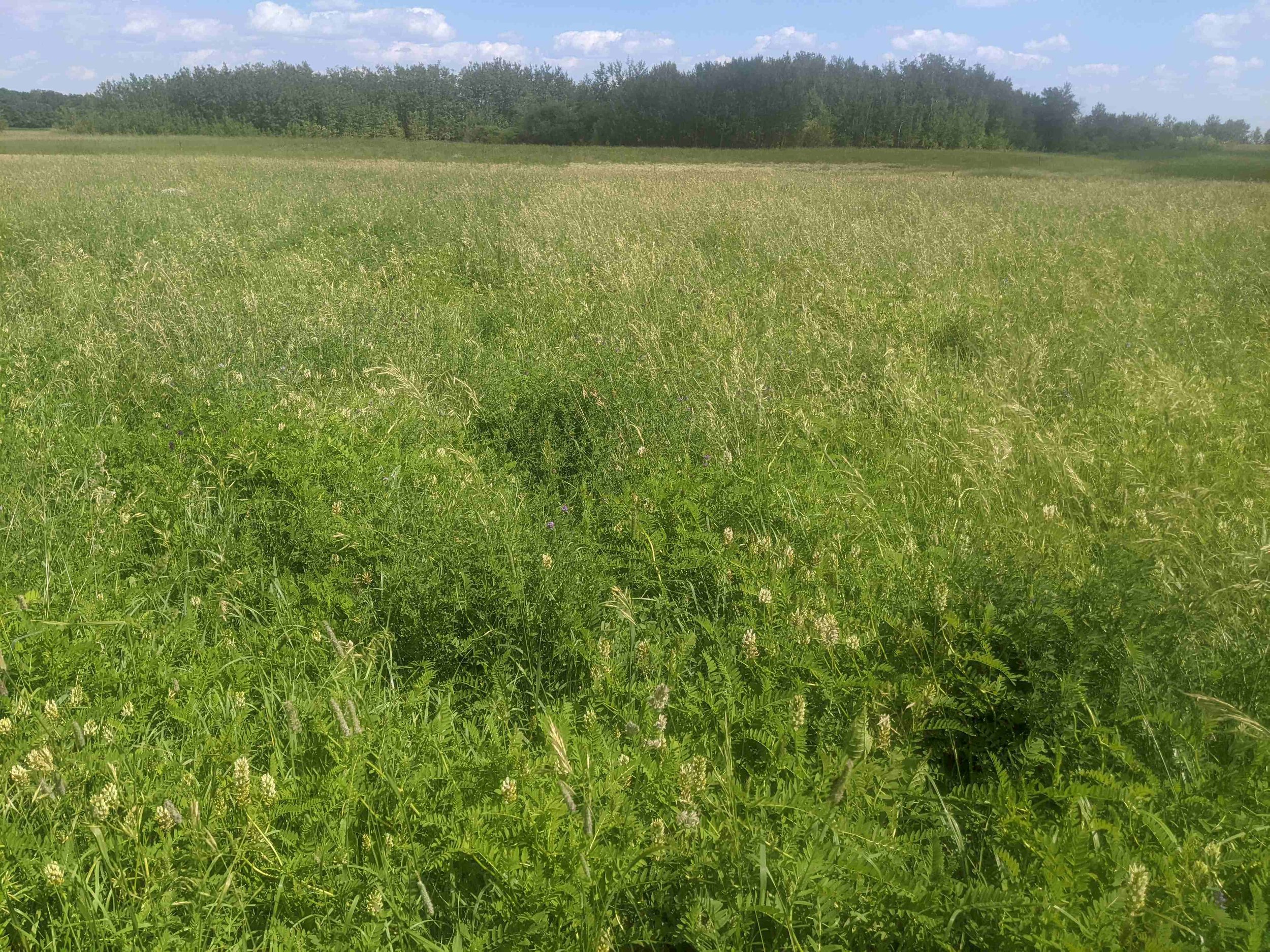Back to Research & Demonstration
Impacts of two different grazing intensities on cicer milkvetch (Astragalus cicer) abundance on a planted native grass pasture
Project Details
Project Lead: Kim Wolfe (Manitoba Agriculture)
Collaborators: Assiniboine West Watershed District (formerly Upper Assiniboine River Conservation District)
Years: 2015 - 2017
Project Status: Complete
Funding & In-Kind Support: Growing Forward II
Location: Brookdale Farm
Scope: Demonstration
Keywords: Perennial Forages, Grazing Management
Approach
Abundance of cicer milkvetch was tested under the two grazing treatments of the Planned Grazing project (high density rotation compared to low density continuous grazing).
Key Findings
Average cicer milkvetch abundance is much higher than grass abundance in all paddocks prior to grazing. Although both cicer milkvetch and grass are being eaten by cattle, abundance of cicer milkvetch is higher than grass after grazing. Grass abundance remains relatively stable prior to and after grazing in both systems.
Initial herbivory results indicate that cattle are selecting grass over the cicer milkvetch in both grazing systems. As expected, herbivory of cicer milkvetch was higher in the high density grazing as these cattle would be less selective and be forced to eat what was available.
Full Reports:
Related Projects at MBFI:
Industry Resources:
Cicer milkvetch - Alberta Agriculture
Cicer milkvetch for Western Canada - Agriculture and Agri-Food Canada
Cicer milkvetch - Cover Crops Canada
